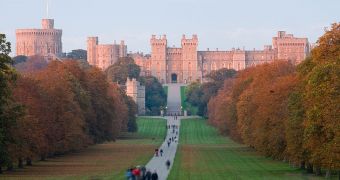The Queen has decided to go green, while relying on the benefits provided by a hydroelectric project worth £1.7 million (€2.03million/$2.65 million), expected to supply the Windsor Castle as well as 300 homes with clean green energy.
It seems that this initiative was announced years ago, but funding was the main obstacle that determined the Queen to put the hydroelectric scheme on hold, the Telegraph informs.
The UK monarchy is no stranger to the advantages offered by renewables, since the Queen has already invested in a hydroelectric plant located in Balmoral.
At the same time, Prince of Wales has decided to go green while installing solar power arrays all across his properties, even though he has suggested that he is not one of the greatest fans of the aesthetics of wind turbines.
The hydroelectric project greening up Windsor Castle, the result of a deal between the Queen and a power company, is expected to decrease the carbon footprint and trigger important financial savings for the Royal Household.
At times when the effects of the financial crises are still noticeable in almost every part of the globe, every pound makes a difference.
Apart from the tempting financial advantages, the eco-friendly strategy poses beneficial changes for the entire ecosystem, through a new “fish path” allowing fish to swim freely up the river.
Almost every eco-friendly innovation comes along with a considerable price tag and the new turbines make no exception.
The items are made by a plant in Holland and are priced at £700,000 (€837,355/$1.09 million), plus installation costs are evaluated at £1 million (€1.19milion/$1.56 million).
Even under these circumstances, the environmental impact of the hydroelectric scheme is far from being negligible.
Developers say the turbines used to supply Windsor Castle with earth-friendly energy will lower the amount of carbon dioxide emissions by 790,000 kilos every year.
After two decades of failed attempts, it seems like the British monarchy is finally making an important step towards a sustainable, carbon-free future.

 14 DAY TRIAL //
14 DAY TRIAL //